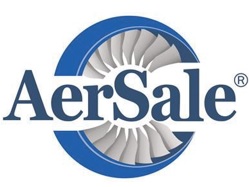Asset Management Solutions
Sales in the Asset Management Solutions segment increased $39.4 million or 189.2%, to $60.3 million for the three months ended June 30, 2021, from $20.9 million for the three months ended June 30, 2020. This was primarily due to a $13.6 million, or 128.9%, increase in revenues from Aircraft, and a $25.8 million, or 251.5%, increase in revenues from Engines. The increase in Aircraft revenues is primarily attributable to increased activity in the B757 product line due to higher trading volume in the amount of $16.5 million, partially offset by lower leasing activity. The increase in Engines revenues is primarily attributable to increased activity in the RB211 product line as a result of higher trading volume, resulting in an increase of $23.1 million, and higher USM part sales in the CF6-80, PW4000, and RB211 product lines totaling $4.7 million, partially offset by lower leasing revenue in the CF6-80, PW4000, V2500, and CFM56 product lines of $2.0 million. The reductions in leasing revenues is attributable to the global decrease in demand for flight hours in response to the COVID-19 pandemic.
Cost of sales in the Asset Management Solutions segment increased $11.4 million or 38.5%, to $41.2 million for the three months ended June 30, 2021, compared to $29.8 million for the three months ended June 30, 2020. The increase in cost of sales was primarily driven by the sales increase discussed above. Gross profit in the Asset Management Solutions segment increased $28.0 million, to $19.1 million for the three months ended June 30, 2021, from a loss of $8.9 million for the three months ended June 30, 2020. The margin increase is mainly attributable to higher margins generated on flight equipment sales in the amount of $17.3 million, lower inventory obsolescence reserves of $8.1 million, and no impairment of flight equipment for the three months ended June 30, 2021.
Aircraft gross profit margins increased to 21.3% for the three months ended June 30, 2021, from a gross loss margin of 93.6% for the three months ended June 30, 2020 due to higher margins generated by flight equipment sales as noted above and lower inventory obsolescence reserves. Engines gross profit margins was 38.6% for the three months ended June 30, 2021, an increase from 9.9% for the three months ended June 30, 2020, which was primarily the result of higher margin on flight equipment sales, no inventory obsolescence reserves and no impairment of flight equipment for the three months ended June 30, 2021.
Tech Ops
Our revenue from Tech Ops increased by $7.1 million or 29.0%, to $31.6 million for the three months ended June 30, 2021, compared to $24.5 million for the three months ended June 30, 2020. The increase was primarily driven by increased demand for maintenance and storage programs, including preservation work, as a result of the increase in fleet groundings due to reduced passenger flight volume related to COVID-19.
Cost of sales in Tech Ops increased $2.3 million or 12.7%, to $20.0 million for the three months ended June 30, 2021, from $17.7 million for the three months ended June 30, 2020, which is directly related to higher revenues noted above. Gross profit in Tech Ops increased $4.9 million or 71.7%, to $11.6 million for the three months ended June 30, 2021, compared to $6.8 million for the three months ended June 30, 2020. The increase in gross profit is primarily attributable to increased contributions from maintenance and storage programs. Gross profit margin increased to 36.8% for the three months ended June 30, 2021 compared to 27.7% for the three months ended June 30, 2020, and was largely attributable to an overall change in the product mix of the segment as a result of the COVID-19 pandemic.
Selling, General and Administrative Expenses
Selling, general and administrative expenses increased $3.0 million, or 20.9% to $17.0 million for the three months ended June 30, 2021, as compared to $14.0 million for the three months ended June 30, 2020. The increase was mostly related to the adjustment of cost saving initiatives previously implemented in response to the COVID-19 pandemic in 2020, of which some were temporary in nature and have been adjusted to support the increased volume during 2021.
